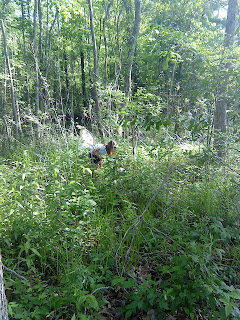You see...Sean is in the senior division for the second year and I told him that I really wanted him to step up his involvement without me being the one planning out all the details. Sean agreed to this and said he would practice. Unfortunately, he did not follow through with this commitment.
Now Sean is very smart and I am sure he knows more than the average person about insects. I have no doubt that he is capable of learning whatever he sets his mind to do. But here in lies the problem...he decided that he already knew all the material and did not need to study. I tried to tell him that he might want to review the information to be sure about what he knew for the contest.
 So the results are in and Sean (4 time high point individual) was knocked down to fourth place this year! I wish I could tell you how surprised he was by this news. However, I must give him credit...he handled it well and accepted his fourth place ribbon and congratulated the others from the group for their great job.
So the results are in and Sean (4 time high point individual) was knocked down to fourth place this year! I wish I could tell you how surprised he was by this news. However, I must give him credit...he handled it well and accepted his fourth place ribbon and congratulated the others from the group for their great job. As we were walking back to the car, he asked me what had gone wrong. It would have been easy to have an "I told you so." moment, but I just talked to him about his need to always improve his knowledge. I also told him that it was never too late to try for next year. My goal for him is to be self-motivated in his interests. It was not about me helping him but him taking the initiative to ask for help to review the information.
And...fourth place is nothing to sneeze about...he did a great job! I am very proud of him and his ability to know so much information. Now he has a plan and I hope that after eating a little piece of humble pie, he will try even harder to be his personal best...in entomology...in 4H...and more importantly, in his little part of the world...whether that is in East Texas or beyond.
 Beyond our experience...I also wanted to share that other members of our group did well today. In our intermediate group (the biggest group of the day), Timothy received a fifth place ribbon (missed getting his picture) and Coty earned a second place ribbon. And, our junior...Kristin (first time participant) received a second place ribbon after a tied score with first place participant! The judges had to look at the spelling to determine the high point individual! Great job!
Beyond our experience...I also wanted to share that other members of our group did well today. In our intermediate group (the biggest group of the day), Timothy received a fifth place ribbon (missed getting his picture) and Coty earned a second place ribbon. And, our junior...Kristin (first time participant) received a second place ribbon after a tied score with first place participant! The judges had to look at the spelling to determine the high point individual! Great job! I am not sure if there are any other participants in the other contests of the day. We did have a fashion show contest that will take place later in the day. I hope to hear back about those results soon and I will update the post.
I am not sure if there are any other participants in the other contests of the day. We did have a fashion show contest that will take place later in the day. I hope to hear back about those results soon and I will update the post. 


































